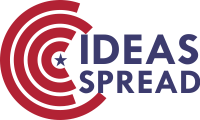Innovation and Practice Exploration of Middle School Physical Education Teaching Methods from the Perspective of Core Literacy
Abstract
Under the educational reform background of "cultivating students' core literacy", physical education teaching in middle schools is transforming from the imparting of single skills to "all-round development". Based on the three core competencies of motor ability, healthy behavior and social adaptation proposed in the "Compulsory Education Physical Education and Health Curriculum Standards (2022 Edition)", this article analyzes the limitations of traditional teaching methods in the cultivation of competencies, and systematically constructs innovative strategies such as the integration of "learning, practice, competition and application", contextualized task-driven and differentiated competency development. Explore the paradigm shift of physical education from "knowledge-based" to "competency-based" through the reform of teaching methods. The research suggests that teaching innovation oriented towards core literacy should focus on problem-solving in real situations, strengthen students' active participation in transfer and application, and provide practical paths for cultivating new era individuals with lifelong motor skills and sound personalities.
References
[2] Liu, J. (2017). Core literacy of physical education and its formation path. Curriculum, Textbooks and Teaching Methods, 37(7), 64–68.
[3] Mao, Z., & Liu, X. (2017). On the core literacy of physical education discipline. Journal of Beijing Sport University, 40(11), 1–4.
[4] Wang, J., & Chen, L. (2020). Construction of an integrated teaching model of "learning, practicing and competing" in primary and secondary school physical education from the perspective of core literacy. Chinese Journal of Education, (5), 90–94.
[5] Wu, J., & Li, H. (2019). Teaching reform of physical education and health curriculum based on core literacy. Chinese School Physical Education, (1), 18–21.

This work is licensed under a Creative Commons Attribution 4.0 International License.
Copyright for this article is retained by the author(s), with first publication rights granted to the journal.
This is an open-access article distributed under the terms and conditions of the Creative Commons Attribution license (http://creativecommons.org/licenses/by/4.0/).








1.png)

















